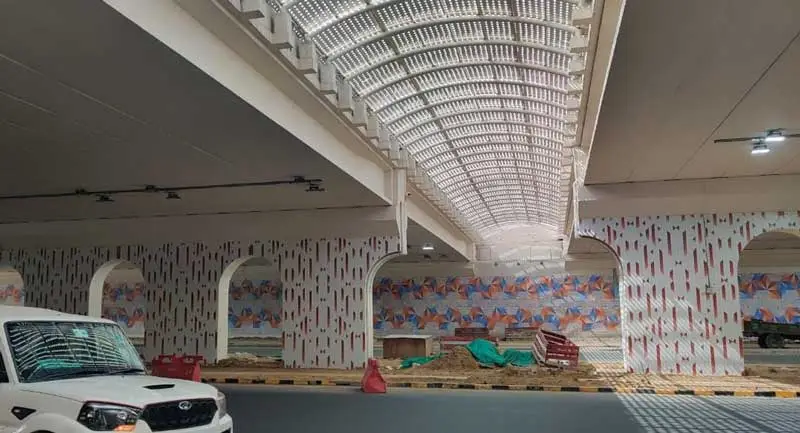
Jyotiraditya Scindia, the Minister of Civil Aviation, opened the fourth runway and Eastern Cross Taxiways (ECT) at Delhi's Indira Gandhi International Airport (IGIA) on July 14, 2023. This momentous occasion marks the completion of the first aircraft taxiway in India and the fourth of its kind worldwide. Kerakoll, a renowned leader in the green construction industry, was responsible for this exclusive project, while L&T acted as contractor.
The introduction of these new facilities has significantly increased capacity and operational efficiency of India's largest airport. It is expected that the airport will now able to handle an annual passenger volume of 109 million.
During the inauguration, Minister Scindia stressed that the civil aviation sector in the The country is at a turning point and is entering a phase of exponential growth.
One of the main challenges during the implementation of the project, the first of its kind, was the design of the tunnel wall system. The vibrations caused by aircraft movements presented an important concern. While many brands struggled to find a suitable solution, Kerakoll, an Italian company specializing in construction chemicals, recommended their Most reliable product for such environmental conditions.
Minister Scindia revealed that this development will increase the airport's flight movements capacity from 1,400 to 15,000, almost 2,000 movements. In addition, with the operationalization of the ECT, the time required for aircraft to taxi will be reduced to about 10-12 minutes, less than the previous 20 minutes.
Minister Scindia also said that while aircraft will taxi on the ECT, vehicles able to move on the road below. In addition, the ECT can be used at the same time accommodate two wide-body aircraft, such as the A380 and B777.
The ECT has a length of 2.1 km and is suitable for wide-body aircraft, minimizing the time passengers spend after landing and before taking on the tarmac. ready. This transverse taxiway connects the northern and southern airports on the east side of the airport, significantly reducing the taxi distance for aircraft by seven kilometers. Each runway is 44 meters wide, with a gap of 47 meters between them, allowing the simultaneous passage of two aircraft.
It is estimated that the ECT will save around 350 kg of fuel each time an aircraft taxis from RW 29R to Terminal 1 and vice versa, resulting in a reduction of almost 1,114 kg of CO2 emissions per taxiing aircraft along this route. Annually, the ECT is expected to reduce aircraft-related CO2 emissions by approximately 55,000 tons. In particular, about 9,175 MT of fly ash was used in the construction of the ECT, which contributed to its durability.
Automotive Body Coach Building
Hydraulic & Pneumatic Equipment
Industrial & Shipping Containers, Barrels And Drums
Insulators, Insulation Material & Accessories
Mechanical Power Transmission Tools And Accessories
Miscellaneous Automobile Parts, Components & Equipment
Miscellaneous Electrical & Electronic Items
Ship & Marine Tools, Equipment & Accessories